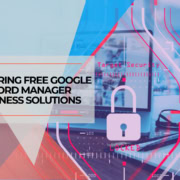Gmail AI Features: Complete Guide to Google Workspace AI Integration
Published: March 20, 2023 | Last updated: September 2025
Key Takeaway: Google Workspace has transformed from experimental AI features to a comprehensive suite of intelligent productivity tools. Gmail now offers smart compose, email summarization, and automated responses. At the same time, Docs and Slides provide AI-powered content generation and design assistance that can significantly improve business productivity when properly implemented.
Google Workspace has evolved far beyond introductory email and document editing. The platform now integrates sophisticated artificial intelligence across Gmail, Google Docs, Sheets, and Slides, fundamentally changing how businesses handle communication and content creation. These AI capabilities have moved from experimental features to production-ready tools that many organizations rely on daily.
Understanding these AI features becomes crucial as businesses seek competitive advantages through productivity improvements. The integration spans from simple email assistance to complex document generation, offering capabilities that can transform workflows when implemented strategically. For organizations evaluating their productivity suite options, these AI capabilities represent a significant differentiator in the modern workplace.
Table of Contents
- 1 Gmail AI Features: Beyond Smart Compose
- 2 Google Docs AI: From Blank Page to Finished Document
- 3 Google Slides AI: Automated Design and Content Creation
- 4 Google Sheets AI: Data Analysis and Automation
- 5 Implementation Strategy for Business Teams
- 6 Measuring AI Impact and ROI
- 7 Future Developments and Roadmap
- 8 Frequently Asked Questions
- 8.0.1 How secure is Google Workspace AI with confidential business data?
- 8.0.2 Can AI-generated content be detected or flagged by external systems?
- 8.0.3 What training is required for teams to use Google Workspace AI effectively?
- 8.0.4 How does Google Workspace AI compare to Microsoft 365 Copilot?
- 8.0.5 What are the additional costs for Google Workspace AI features?
- 8.0.6 Can Google Workspace AI work offline or with limited internet connectivity?
Gmail AI Features: Beyond Smart Compose
Gmail's AI capabilities have expanded significantly beyond the original Smart Compose feature. The platform now offers a comprehensive suite of intelligent email management tools that address common workplace communication challenges.
Smart Compose and Reply
Smart Compose analyzes your writing patterns and suggests complete sentences as you type. The system learns from your communication style, making suggestions increasingly relevant over time. Smart Reply offers contextually appropriate response options for incoming emails, particularly effective for routine business communications.
Practical Applications
Customer service teams report reducing response times by approximately 30% when using Smart Reply for common inquiries. Sales teams use Smart Compose to maintain consistent messaging across prospect communications while personalizing content efficiently.
Email Summarization and Priority Inbox
Gmail's AI can generate concise summaries of lengthy email threads, extracting key decisions and action items. Priority Inbox uses machine learning to identify important messages based on your interaction patterns, sender relationships, and content analysis.
The system analyzes factors including sender frequency, your response patterns, and keyword importance to surface critical communications. This proves particularly valuable for executives and project managers who receive high email volumes.
Advanced Filtering and Organization
AI-powered filters automatically categorize emails into relevant folders, identify potential spam with higher accuracy, and suggest appropriate labels based on content analysis. The system can automatically recognize patterns in your email management behavior and replicate those decisions.
Implementation Considerations
Organizations should establish clear guidelines for using AI assistance, particularly regarding confidential communications. Training teams on optimal prompting techniques improves AI output quality significantly. When processing sensitive business communications through AI systems, consider privacy implications.
Google Docs AI: From Blank Page to Finished Document
Google Docs has integrated AI writing assistance that goes beyond grammar checking to provide substantive content creation support. The “Help me write” feature can generate entire sections based on prompts, while maintaining your document's tone and style.
Content Generation Capabilities
The AI can create various document types, including project proposals, meeting agendas, policy documents, and marketing materials. Users provide context through prompts, and the system generates structured content that serves as a strong starting point for further refinement.
- Generate comprehensive project proposals with proper structure and professional language.
- Create meeting agendas that include relevant discussion points and time allocations.
- Draft policy documents with appropriate legal language and clear procedures.
- Produce marketing copy that aligns with brand voice and messaging guidelines.
- Develop training materials with logical progression and clear learning objectives.
Collaborative AI Features
Multiple team members can interact with AI suggestions simultaneously, creating a collaborative editing environment where AI serves as an additional team member. The system maintains a version history of AI-generated content, allowing teams to track which suggestions were accepted or modified.
Real-time collaboration extends to AI interactions, meaning team members can see AI suggestions as they appear and discuss their relevance immediately. This creates more dynamic document creation processes, combining human creativity with AI efficiency.
Document Enhancement and Editing
Beyond initial content creation, Google Docs AI can restructure existing content for improved clarity, suggest alternative phrasings for better readability, and identify potential gaps in document logic or flow.
Quality Control Strategies
Establish review processes for AI-generated content, particularly for external communications. Create prompt libraries with proven effective phrasings for common document types. Maintain human oversight for final content approval, especially for legal or compliance-related documents.
Google Slides AI: Automated Design and Content Creation
Google Slides incorporates AI for content generation and visual design, addressing two major presentation challenges: creating compelling content and efficiently designing professional-looking slides.
Automated Slide Generation
The AI can create entire presentation outlines based on topic prompts, generate speaker notes for each slide, and suggest appropriate visual elements to support key points. This capability proves particularly valuable for sales teams creating client presentations or training departments developing educational materials.
Users can specify presentation length, audience type, and desired outcome, allowing the AI to tailor content appropriately. The system draws from extensive knowledge bases to ensure content accuracy while maintaining engaging presentation flow.
Visual Design Assistance
AI-powered design suggestions include layout recommendations, color scheme selections, and font pairing advice. The system analyzes content to suggest appropriate visual metaphors and diagram types that enhance message clarity.
| Design Element | AI Capability | Business Impact |
|---|---|---|
| Layout Selection | Suggests optimal slide layouts based on content type | Reduces design time by 40-60% |
| Color Coordination | Recommends brand-consistent color schemes | Maintains visual consistency across presentations |
| Image Selection | Suggests relevant stock photos and graphics | Improves visual appeal without design expertise |
| Chart Creation | Generates appropriate data visualizations | Enhances data comprehension and retention |
Speaker Notes and Presentation Coaching
AI generates detailed speaker notes that include transition phrases, emphasis points, and audience engagement suggestions. The system can analyze presentation content to identify potential areas where audiences might have questions or need additional clarification.
For organizations evaluating comprehensive business communication solutions, these presentation capabilities represent significant value when combined with email and document AI features.
Google Sheets AI: Data Analysis and Automation
Google Sheets AI capabilities focus on data analysis, formula generation, and automated insights that help businesses make sense of complex datasets without requiring advanced spreadsheet expertise.
Intelligent Formula Creation
Users can describe desired calculations in plain English, and the AI generates appropriate formulas. This feature democratizes advanced spreadsheet functionality, allowing team members without extensive Excel or Sheets experience to analyze complex data.
Example Applications
“Calculate the average sales per region excluding outliers” becomes a complex formula automatically. “Show month-over-month growth rates for each product line” generates appropriate percentage calculations and formatting. “Identify customers with declining purchase patterns” creates conditional logic to flag at-risk accounts.
Automated Data Insights
The AI analyzes datasets to identify trends, anomalies, and patterns that might not be immediately obvious. It can suggest appropriate chart types for data visualization and highlight significant changes in key metrics.
These insights are particularly valuable for financial analysis, tracking sales performance, and monitoring operational metrics. The system can generate executive summaries of data trends, saving analysts significant time preparing reports.
Implementation Strategy for Business Teams
Successfully implementing Google Workspace AI features requires strategic planning, team training, and gradual rollout to maximize adoption and effectiveness.
Phased Deployment Approach
Phase 1: Foundation Setup (Weeks 1-2)
Enable AI features across Google Workspace accounts and establish usage guidelines. Train IT administrators on feature management and privacy controls. Create initial prompt libraries for typical business use cases.
Phase 2: Pilot Program (Weeks 3-6)
Deploy AI features to select power users and early adopters. Gather feedback on effectiveness and identify optimization opportunities. Develop best practices documentation based on real usage patterns.
Phase 3: Organization-Wide Rollout (Weeks 7-12)
Expand access to all relevant team members with comprehensive training programs. Monitor usage patterns and provide ongoing support. Measure productivity improvements and adjust implementation strategies.
Training and Change Management
Effective AI adoption requires addressing both technical skills and workflow changes. Teams need training on optimal prompting techniques, understanding AI limitations, and integrating AI assistance into existing processes.
- Conduct hands-on workshops demonstrating practical AI applications for each department.
- Create role-specific training materials showing relevant use cases and examples.
- Establish mentorship programs pairing AI-proficient users with newcomers.
- Develop feedback channels for continuous improvement and feature requests.
- Regularly share success stories and productivity improvements across the organization.
Privacy and Security Considerations
Organizations must balance AI capabilities with data protection requirements. Google Workspace provides administrative controls for AI feature management, allowing IT teams to restrict access to sensitive information while maintaining productivity benefits.
Important Security Note
Review data processing agreements and understand how AI features handle confidential information. Establish clear policies regarding AI usage with sensitive client data or proprietary business information. Consider implementing additional approval workflows for AI-generated content in regulated industries.
Measuring AI Impact and ROI
Quantifying the business value of Google Workspace AI features requires establishing baseline metrics and tracking improvements across multiple dimensions including time savings, quality improvements, and user satisfaction.
Key Performance Indicators
Organizations typically measure AI impact through document creation time, email response efficiency, presentation development speed, and data analysis accuracy. These metrics provide concrete evidence of productivity improvements and help justify continued investment in AI capabilities.
| Metric Category | Measurement Method | Expected Improvement |
|---|---|---|
| Email Efficiency | Average composition time and response rates | 25-40% reduction in email handling time |
| Document Creation | Time from concept to first draft completion | 50-70% faster initial content generation |
| Presentation Development | Design time and content quality scores | 30-50% reduction in slide creation time |
| Data Analysis | Report generation speed and insight accuracy | 40-60% faster analytical reporting |
Long-term Strategic Benefits
Beyond immediate productivity gains, Google Workspace AI features contribute to competitive advantages through improved content quality, faster market response times, and enhanced team collaboration capabilities. Organizations report better client communication, more professional presentation materials, and increased capacity for strategic projects.
The cumulative effect of these improvements often exceeds initial productivity projections as teams develop more sophisticated AI usage patterns and integrate these tools into complex workflows. For businesses comparing productivity platform options, these strategic benefits represent long-term competitive positioning advantages.
Future Developments and Roadmap
Google continues expanding AI capabilities across Workspace applications, with developments focusing on deeper integration, improved contextual understanding, and enhanced collaboration features that leverage artificial intelligence.
Emerging Capabilities
Current development areas include cross-application AI integration, where insights from email communications inform document creation and presentation development. Enhanced language support enables global organizations to leverage AI features across diverse linguistic requirements.
Anticipated Enhancements
Voice-to-text improvements with better accuracy for technical terminology and industry-specific language. Enhanced collaboration AI that can moderate meetings, track action items, and generate comprehensive meeting summaries. Predictive analytics integration that suggests optimal communication timing and content strategies based on recipient behavior patterns.
Integration with Third-Party Tools
Google is expanding AI feature compatibility with popular business applications, enabling seamless workflows that span multiple platforms while maintaining AI assistance throughout the process. This includes CRM integration, project management tool connectivity, and enhanced API access for custom applications.
These developments suggest that Google Workspace AI will become increasingly central to business operations, making early adoption and team familiarity with these tools strategically advantageous for organizations planning long-term productivity improvements.
The evolution of Google Workspace AI represents a fundamental shift in how businesses approach productivity and collaboration. Organizations that invest time in understanding and implementing these capabilities position themselves for significant competitive advantages through improved efficiency, better content quality, and enhanced team collaboration. Success requires strategic implementation, comprehensive training, and ongoing optimization based on usage patterns and business outcomes.
For businesses seeking to maximize their productivity investments, exploring comprehensive technology integration strategies ensures that AI capabilities align with broader operational objectives and deliver measurable business value.
Frequently Asked Questions
How secure is Google Workspace AI with confidential business data?
Google Workspace AI processes data according to your organization's existing data governance policies and Google's enterprise security standards. Administrators can control which users can access AI features and restrict usage for specific types of sensitive content. Data used for AI processing follows the same encryption and privacy protections as other Google Workspace content, and Google does not use your business data to train its general AI models.
Can AI-generated content be detected or flagged by external systems?
Though detection accuracy varies significantly, AI-generated content from Google Workspace tools may be detectable by specialized AI detection software. Organizations should establish clear disclosure policies regarding AI assistance usage for external communications, particularly in academic or regulatory contexts. The key is transparency about AI involvement while ensuring all content meets quality and accuracy standards, regardless of its generation method.
What training is required for teams to use Google Workspace AI effectively?
Effective AI adoption typically requires 2-4 hours of initial training per user, focusing on prompting techniques, understanding AI limitations, and integrating AI tools into existing workflows. Ongoing training should address advanced features and best practices as teams develop proficiency. Role-specific training proves most effective, with sales teams learning different applications than accounting or marketing departments.
How does Google Workspace AI compare to Microsoft 365 Copilot?
Google Workspace AI and Microsoft 365 Copilot offer similar core functionality with some key differences in implementation and integration depth. Google's approach emphasizes collaborative editing and real-time suggestions, while Microsoft focuses on deeper integration with business data and workflow automation. Choice often depends on existing platform preferences, specific feature requirements, and organizational collaboration patterns rather than fundamental capability differences.
What are the additional costs for Google Workspace AI features?
Standard Google Workspace plans include many basic AI features, including Smart Compose and basic document assistance. Advanced AI capabilities require Google Workspace Business or Enterprise plans, which include more sophisticated features like advanced document generation and enhanced data analysis tools. Organizations should evaluate feature requirements against plan costs to determine the most cost-effective approach for their needs.
Can Google Workspace AI work offline or with limited internet connectivity?
Google Workspace AI features require internet connectivity to function, as processing occurs on Google's cloud infrastructure. However, Google Workspace offers offline capabilities for basic document editing and email access, though AI assistance becomes unavailable until connectivity is restored. Organizations with frequent connectivity challenges should plan workflows that accommodate these limitations and consider alternative productivity strategies for offline scenarios.











Leave a Reply
Want to join the discussion?Feel free to contribute!